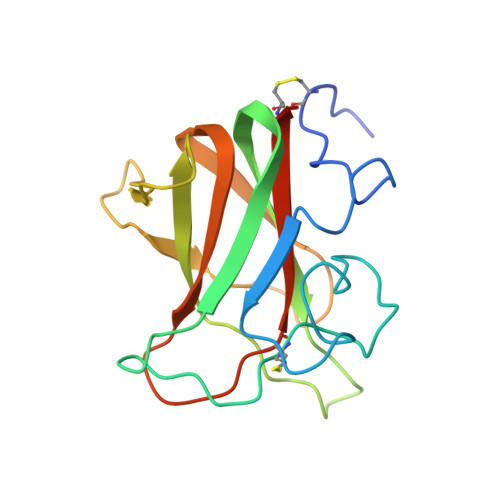Structural basis of the collagen-binding mode of discoidin domain receptor 2
Ichikawa, O., Osawa, M., Nishida, N., Goshima, N., Nomura, N., Shimada, I.(2007) EMBO J 26: 4168-4176
- PubMed: 17703188
- DOI: https://doi.org/10.1038/sj.emboj.7601833
- Primary Citation of Related Structures:
2Z4F - PubMed Abstract:
Discoidin domain receptor (DDR) is a cell-surface receptor tyrosine kinase activated by the binding of its discoidin (DS) domain to fibrillar collagen. Here, we have determined the NMR structure of the DS domain in DDR2 (DDR2-DS domain), and identified the binding site to fibrillar collagen by transferred cross-saturation experiments. The DDR2-DS domain structure adopts a distorted jellyroll fold, consisting of eight beta-strands. The collagen-binding site is formed at the interloop trench, consisting of charged residues surrounded by hydrophobic residues. The surface profile of the collagen-binding site suggests that the DDR2-DS domain recognizes specific sites on fibrillar collagen. This study provides a molecular basis for the collagen-binding mode of the DDR2-DS domain.
Organizational Affiliation:
Graduate School of Pharmaceutical Sciences, The University of Tokyo, Tokyo, Japan.














